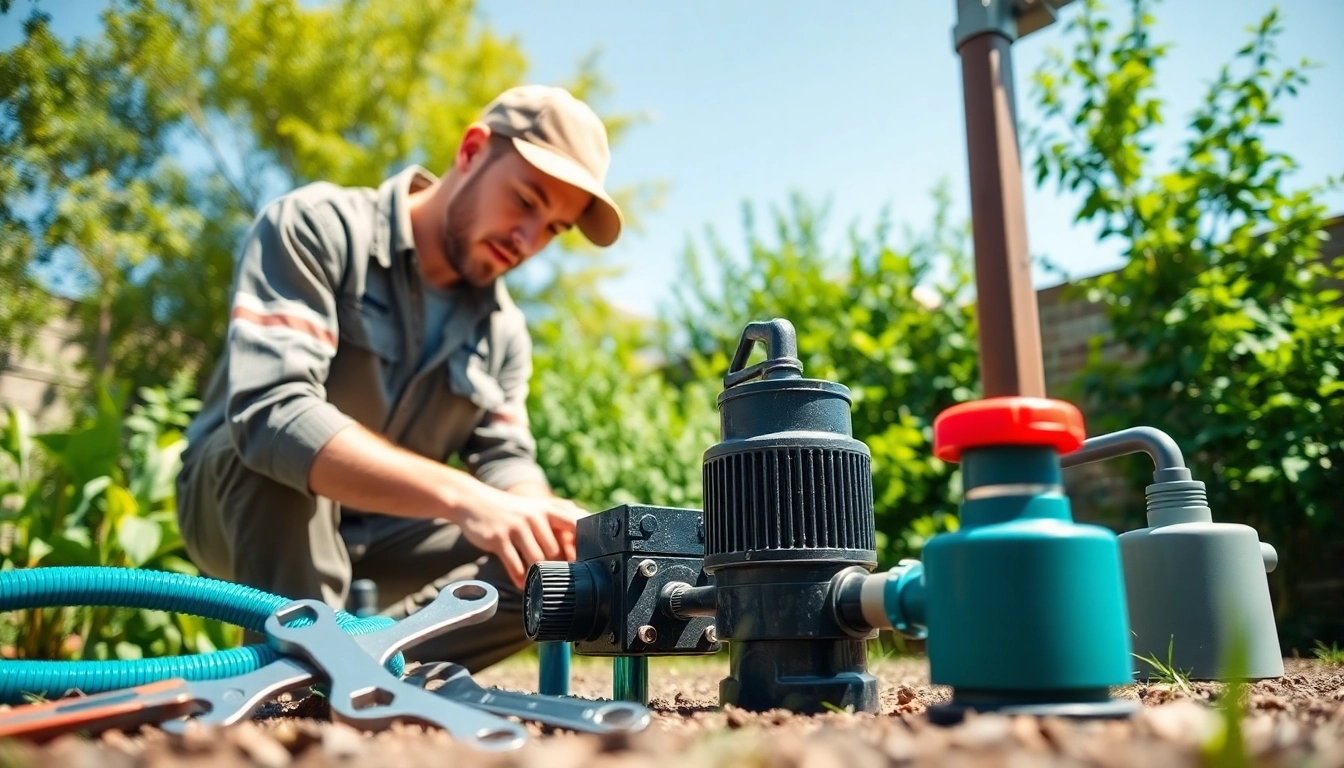Introduction to Well Pump Replacement
For many homeowners with wells, a reliable and functional well pump is crucial for accessing clean, potable water. When it comes time for well pump replacement, understanding the components, processes, and financial implications can greatly alleviate the stress often associated with this task. This article delves into what a well pump is, why maintenance is essential, signs indicating a need for replacement, various types of pumps available, the steps involved in the replacement process, associated costs, common issues that may arise afterwards, and how to seek professional help when necessary.
What is a Well Pump?
A well pump is a mechanical device installed in water wells to draw water from underground aquifers. It typically consists of various parts including the motor, impellers, and piping systems. There are two primary types of well pumps used in residential applications: submersible pumps and jet pumps. Understanding their functionality and limitations is essential for efficient operation and maintenance.
Importance of Well Pump Maintenance
Well pump maintenance plays a critical role in ensuring longevity and performance. Regular maintenance can prevent premature failure, save on costly repairs, and safeguard water quality. Tasks such as inspecting electrical components, checking pressure switches, and ensuring the sanitation of the water supply are necessary to maintain optimal pump operation. By staying proactive with maintenance, homeowners can minimize the likelihood of issues that require costly well pump replacement.
Signs You Need a Replacement
Knowing when to replace a well pump is vital. Some common signs include:
- Low Water Pressure: If water pressure dips significantly, it may indicate that the pump is failing to perform effectively.
- Unusual Noises: Strange sounds like grinding or rattling can signal mechanical issues or wear and tear.
- Water Quality Changes: If the water becomes discolored or has a foul smell, this could indicate that the pump has been compromised.
- Frequent Cycling: If the pump is turning on and off frequently, this may suggest a malfunction within the system.
Types of Well Pumps
Submersible Well Pump Overview
Submersible well pumps are designed to be placed underwater, typically deep within the well casing. They consist of a sealed motor and pump body to protect them from water intrusion. These pumps are generally more efficient than jet pumps, especially in deeper wells, because they push water to the surface rather than pulling it. However, they can be more complex to replace if they fail, as they require greater installation depth and effort.
Jet Pump Functionality
Jet pumps operate using a different principle — they generate a vacuum that pulls water from the well. These pumps are typically suited for shallow wells, with a maximum depth of about 25 feet. Jet pumps are generally easier to install and replace, making them a popular choice for homeowners. However, they may not provide the efficiency needed in deeper wells or higher-water-demand scenarios.
Comparing Pump Types for Efficiency
When considering efficiency, submersible pumps tend to outperform jet pumps, especially in scenarios where water needs to be drawn from a deeper source. They usually provide a higher flow rate and can run more quietly. However, jet pumps may be advantageous for technical simplicity and lower upfront costs. Ultimately, the ideal choice depends on individual circumstances, well depth, and required water output.
Steps for Well Pump Replacement
Preparing for a Safe Replacement
Proper preparation for pump replacement can significantly mitigate risks and enhance efficiency. Here are the preliminary steps to undertake:
- Assess Your Needs: Determine the pump size, type, and horsepower that best suits your well.
- Gather Necessary Tools: Ensure you have all necessary equipment at hand, such as wrenches, a hoist, and safety gear.
- Shut Off Power: Before beginning any work, make sure the electrical supply to the pump is completely shut off.
- Drain the System: Drain the well to prevent water from entering the workspace during the replacement.
Installing Your New Well Pump
Once all preparations are complete, installing the new well pump can proceed smoothly. The installation process generally follows these steps:
- Remove the Old Pump: Carefully extract the old pump from the well, ensuring not to damage the well casing or existing pipes.
- Insert the New Pump: Lower the new pump into the well gradually, watching for proper positioning.
- Connect Electrical Wiring: Ensure that all electrical connections are properly made and insulated to prevent short circuits.
- Reconnect Water Lines: Securely attach and seal all water lines to ensure no leaks occur after the installation is complete.
Testing and Maintenance After Replacement
After installation, it’s crucial to test the new pump thoroughly:
- Check Water Flow: Observe the water output to ensure it meets your demands.
- Test Pressure Levels: Use a pressure gauge to verify that the system operates within a safe pressure range.
- Monitor for Unusual Noises: Listen for any irregular sounds that could indicate operational issues.
Maintaining the new pump through regular inspections and adhering to a maintenance schedule is essential to extend its service life.
Costs Involved in Well Pump Replacement
Understanding Average Pricing
The cost of well pump replacement can vary widely depending on several factors, including pump type, depth of the well, complexity of installation, and local labor rates. On average, homeowners can expect to pay between $2,800 to $6,000 for a full pump replacement. This range includes costs for both the pump and labor. To get a better estimate, it’s smart to gather quotes from multiple contractors and assess any additional expenses that may arise.
DIY vs. Professional Costs
While some homeowners may consider a DIY approach to save on costs, it’s important to understand the potential pitfalls. DIY projects eliminate labor costs but may require the purchase of specialized tools. Furthermore, without proper experience, a DIY replacement might lead to installation errors, costing even more in the long run. Hiring a professional helps guarantee correct installation and compliance with local regulations but comes with higher initial expenses. Weighing these options carefully is crucial in making the right decision.
Potential Financial Assistance Resources
For those who find the costs daunting, there are potential financial assistance resources available. Local government programs and non-profit organizations may offer grants or low-interest loans for replacing well pumps, especially in rural areas. Researching these options before proceeding with replacement can provide much-needed financial relief.
Common Issues After Well Pump Replacement
Recognizing Immediate Troubles
After a well pump replacement, homeowners may experience certain issues that warrant attention. Common immediate troubles to look out for include:
- Water Leaks: Inspect all connections for leaks, which can indicate a poor seal or damaged fitting.
- Electrical Failures: If the pump fails to operate, it may point to incorrect wiring or a faulty pressure switch.
- Strange Noises: Listen for any unusual sounds, which may indicate that the pump is running incorrectly or that foreign objects have entered the system.
Long-Term Care Tips
Long-term maintenance is essential for the successful operation of a well pump. Key care tips include:
- Annual Inspections: Schedule yearly inspections to detect problems before they escalate.
- Monitor Water Quality: Regularly test water for contaminants to ensure it remains safe for consumption.
- Keep Records: Maintain records of maintenance, repairs, and replacements to track the pump’s history.
When to Call for Professional Help
While many issues can be self-managed, there are instances where professional help is crucial:
- If water pressure issues persist post-installation despite all adjustments.
- Should any electrical anomalies occur that can pose safety risks.
- If frequent repairs are required shortly after replacement.
Engaging a professional saves time, effort, and ensures that your water supply remains dependable and safe.


